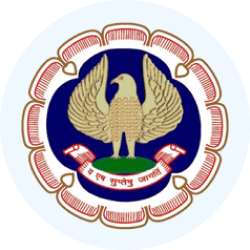CA Intermediate Exam > CA Intermediate Videos > Crash Course for CA Intermediate > GST in India – An Introduction - 2
GST in India – An Introduction - 2 Video Lecture | Crash Course for CA Intermediate
FAQs on GST in India – An Introduction - 2 Video Lecture - Crash Course for CA Intermediate
| 1. What is the Goods and Services Tax (GST) and how does it function in India? |  |
Ans. The Goods and Services Tax (GST) is a comprehensive indirect tax system implemented in India to streamline the taxation process and eliminate the cascading effect of multiple taxes. It integrates various central and state taxes into a single tax structure. GST operates on the principle of 'One Nation, One Tax', ensuring uniformity across the nation. It is levied on the supply of goods and services and is categorized into three types: Central GST (CGST), State GST (SGST), and Integrated GST (IGST). CGST and SGST are applicable when the supply occurs within a state, while IGST is applicable for inter-state sales.
| 2. What are the main objectives of implementing GST in India? |  |
Ans. The primary objectives of implementing GST in India include simplifying the tax structure, reducing the overall tax burden on consumers, eliminating the cascading effect of taxes, improving compliance and revenue collection, and fostering a transparent and efficient tax administration. Additionally, GST aims to enhance the ease of doing business by providing a uniform tax regime across the country, thereby promoting economic growth and development.
| 3. Who is responsible for the administration of GST in India? |  |
Ans. The administration of GST in India is the joint responsibility of both the Central and State governments. The GST Council, which comprises the Union Finance Minister and the Finance Ministers of the states, plays a crucial role in formulating policies, setting tax rates, and resolving disputes related to GST. The Central government is responsible for the collection of CGST and IGST, while the state governments collect SGST.
| 4. What are the key features of GST that differentiate it from the previous tax structure? |  |
Ans. Key features of GST that differentiate it from the previous tax structure include the following:
1. Comprehensive tax regime: GST replaces multiple indirect taxes with a single tax.
2. Tax credit mechanism: It allows input tax credit across the supply chain, reducing the overall tax burden.
3. Destination-based taxation: GST is levied at the point of consumption rather than the point of origin.
4. Simplified compliance: It requires businesses to file fewer returns and maintain simpler records.
5. Uniform tax rates: GST ensures uniformity in tax rates across the country, promoting ease of trade.
| 5. How does the input tax credit mechanism work under GST? |  |
Ans. The input tax credit (ITC) mechanism under GST allows businesses to reclaim the tax paid on inputs used in the production of goods or services. When a registered taxpayer purchases goods or services and pays GST on them, they can use that GST as a credit against their output tax liability. This means that the taxpayer can reduce the amount of GST they need to pay on their sales by the amount of GST they have already paid on their purchases. This mechanism helps avoid the cascading effect of taxes and promotes a seamless flow of credit throughout the supply chain. However, to avail of ITC, certain conditions must be met, such as ensuring that the supplier is also registered under GST and that the purchase is for business use.
Related Searches




















